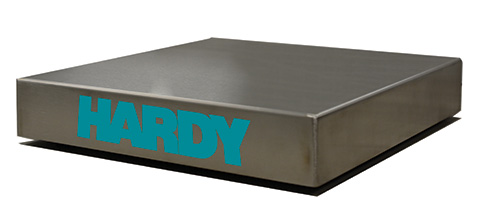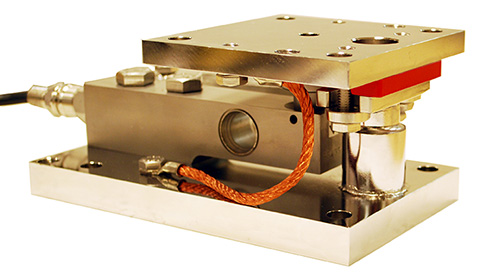Single and Dual ControlLogix® Weigh Scale Modules
Hardy’s single (HI 1756-WS) and dual (HI-1756-2WS) are weigh scale modules that mount directly into an Allen-Bradley ControlLogix® PLC Chassis. They read weight and diagnostic data from one set or two separate sets of strain gauge load sensors or load cells and communicate this data over the I/O chassis backplane to the ControlLogix Processor.
Super Easy Integration
- Free Add-On-Profiles
- Free Faceplates/AOIs for HMIs
- Direct Back-plane Connectivity
The HI 1756-WS and 2WS condition and digitize the weight signals and then transmit the selectable Gross, Net, and/or Rate-of-Change data to the PLC processor. High data resolution allow the modules to tolerate large dead loads and over sizing of the load sensors while retaining a high level of usable resolution.
The modules supply 5 volts of DC excitation to drive up to four 350 ohm load sensors or load cells associated with a single scale (four additional for the 2WS scale). They will support additional load cells with an external power supply.
The HI 1756-WS and 2WS both support the use of the producer/consumer technology in the ControlLogix® system to transmit data. This type of communications is an intelligent data exchange in the system where the module produces data without having to be polled.
Hardy’s process weighing solutions are easy to install, configure, commission, and operate. They are easy to maintain and save you time, money, raw materials, and/or finished product. Visit our Case Studies or Application Notes to learn more.
Rockwell Add-On-Profile (AOP)
Quickly and easily configure the HI 1756-WS or 2WS for your application through PLC software on a PC. An HMI face plate makes the modules incredibly easy to use with common weighing functions built in.
Power
- Provided from the backplane of the rack: +5Vdc, +24Vdc
Backplane Current
- < 1 Amp @ 5Vdc 5W
- < 0.0125 Amp 0.3 @ 24Vdc with 4 350 ohm L.C.
Inputs
- Signal: -0.3mV through +15.3 mVdc
- Sense: +5Vdc
- C2® Electronic Calibration
Outputs
- Excitation 5Vdc to 8.75Vdc
Common Mode Rejection
- 100dB at or below 60 Hz (minimum)
Resolution
- Internal, 1:8,388,608
Conversion Rate
- Series A and B: 50 updates per second
- Series C: 100 updates per second
Vibration Frequency Rejection
- 0.25 Hz and above in 5 selectable steps
- WAVERSAVER®
Weight
- 1.1 lb (0.5 kg)
Environmental Conditions
- Operating Temperature: 0 to 60°C (32 to 140°F)
- Storage Temperature: -40 to 85°C (-40 to 185°F)
Relative Humidity
- 5 to 95% (non-condensing)
Weighing Modes
- Net, Gross, Rate-of-Change
Calibration
- Electronic (C2)
- Traditional (test weights)
Averages
- 1-255 user selectable in single increments
Indicators
- “OK” Module Status, tri-color LED
- “Scale 1” Functional Data, tri-color LED
- “Scale 2” Functional Data, tri-color LED
Approvals
- UL, CUL, CE
- RoHS3 and REACH
Warranty
- Two-year warranty against defects in workmanship
All specifications are subject to change without notice. Please contact the Hardy factory or visit our website for the latest specifications.
The Hardy Process Toolbox is a set of productivity tools that support industrial weighing functions. Each tool saves time, increases accuracy, improves efficiency, or reduces risk in process weighing applications, including WAVERSAVER® to eliminate vibration, C2® electronic calibration, and Integrated Technician® to name just a few.
The HI 1756-WS and 1756-2WS feature the following Toolbox technologies:
WAVERSAVER® Vibration Eliminator
Hardy's WAVERSAVER core technology eliminates the effects that surrounding vibration has on the scale weight signal, providing only true data for fast, accurate weight reading.
C2® (or eCAL) Electronic Calibration
The Hardy C2® (or eCAL as it is known in China) core feature provides quick and easy electronic calibration of a weighing system without the need for heavy test weights.
INTEGRATED TECHNICIAN® Operator Diagnostics
Hardy's INTEGRATED TECHNICIAN (IT) core feature helps you troubleshoot your weighing system and diagnose problems from the front of the instrument or via the PLC. These tests display system weights, voltages, and pass/fail displays to help isolate a problem to the instrument, cabling, or sensors, helping to reduce maintenance costs.



